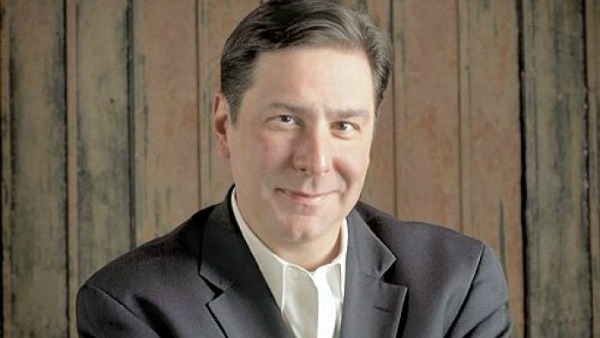
Bill PedutoBarring a meteor strike, this man will be the Steel City’s next mayor.
So you think bike lanes and mass transit are just the hobbyhorses of a handful of elites in coastal cities? Well, think again. Coming soon to an authentically middle-American city near you is an energetic “complete streets” movement with a progressive, environmentally conscious city government. Case in point: Pittsburgh, long known as the “smoky city” because of its history as the center of the American steel industry.
Like the rest of the Rust Belt, Pittsburgh went through decades of post-industrial economic decline and depopulation. But in recent years it has been clawing its way back, riding a wave of computer science and biotechnology innovation. It’s even got an influx of post-irony hipsters.
Soon, Pittsburgh will have a forward-looking city government to match its momentum. On May 22, city councilman Bill Peduto won Pittsburgh’s Democratic mayoral primary. Since, as Peduto notes, “There hasn’t been a Republican elected [mayor] in Pittsburgh since the days of the Great Depression,” winning the Democratic primary is tantamount to winning the election.
On the city council, and in his campaign, Peduto has advocated for sustainable development, complete streets, traffic calming, and alternative transportation. Grist recently caught up with Peduto by phone to ask him about how he intends to improve Pittsburgh’s transportation infrastructure, reduce its carbon footprint, and help further its revitalization.
Q. Did your advocacy on alternative transportation and “complete streets” work to your advantage in the election?
A. The voting base has changed in this city. It’s become younger and it’s become more progressive. That’s why I was able to win, quite honestly. Where the old voting bloc had dictated local elections for past 40 years, there’s a new progressive movement that has been able to win every contested race against the old guard. And not just in this election cycle, but going back about six years now, and to them, complete streets is on the agenda. It’s groups like Progress Pittsburgh that have helped to push it; it’s groups like Bike Pittsburgh that have advocated. And the last component is a city government that gets it.
Q. What were your biggest environmental policy achievements on the city council?
A. On subsidized development, we have created the first clean water act in the city’s history, meaning that if your project is going to be subsidized with any tax dollars, then the amount of rainfall has to meet a certain criteria to stay on the site and not go into the sewer system. We created the first clean air act in the city since World War II, mandating that if your development is receiving public subsidies, the equipment that is building it has to be retrofitted so diesel particulate matter isn’t released into the neighborhoods. We were the largest city to provide incentives for LEED Silver, providing for a 20 percent density or height variance in non-residential areas. These are all bills I wrote. There was also a hillside protection act that basically protected Pitt’s natural hillsides. That’s unique to Pittsburgh: The background to our city is the green tapestry, our urban forest.
Q. What are your plans for environmental policy as mayor?
A. As mayor I will redo our zoning code. It’s easier for someone in Pittsburgh to build an energy-hog building than a sustainable building. That’s just because our code is antiquated and doesn’t recognize sustainable practices. We have to completely update our code to promote sustainable practices of transit-oriented development, multi-use for buildings, and adaptive reuse. All the things that have occurred in the last 20 years have to be incorporated to encourage good growth.
Q. Pittsburgh is known for being relatively successful among Rust Belt cities in that it’s got economic vibrancy from the biotech sector and it’s sort of a hip place to live. Do you see a connection between that and green issues?
A. It really is a city in transformation, maybe more so than any city in United States right now. It has its industrial past, which sort of lends itself to building out the new city without losing that characteristic. So these old industrial sites can be adaptively reused. They can become laboratory spaces for places like Carnegie Mellon University and the University of Pittsburgh.
There are a lot of rail lines that run through the city. The idea with the old economy was, “how do you get a product to market?” We don’t have to strip away the rail lines: We can reuse them as a commuter system, on a heavy rail system. It’s very cost-efficient to do so. It would allow us to expand our new economy of, how you get people to the workplace.
Our riverfront up until recently was completely used for industrial. In fact, buildings were built with their backs to the river. We now have the opportunity not only to connect it into a new use — housing, office, and commercial — but at the same time connect it in the ways of bike trails and pedestrian walkways and redefine Pittsburgh by what has always been its most defining characteristic, its rivers.
Q. You mentioned retrofitting heavy rail for passengers. What other plans do you have for mass transit?
A. With Allegheny County, we have a very small light rail system and a large bus system. We don’t have matching funds like other cities do to go to the federal government and do a light rail expansion, which we need to do. The vision I have is a system that runs countywide in a spine: north, south, east, west, with bus lines as feeders. We have to decide as a region: Either that’s our vision for the next 20 years, or we’ll fail to ever become a 21st-century city.
In the city itself, I envision multimodal. It would be not just heavy rail. That rail might be one part of a multimodal system that would then connect into a light rail system which would connect into a complete street model that would incorporate … access for bikes and pedestrians. That would then tie into water taxis. That would be a way of getting anywhere in the city without having to get into a car to do so.
Q. Is Pittsburgh a bike-friendly town?
A. We have an incredible organization in Pittsburgh called Bike Pittsburgh that probably has well over 5,000 members at this point. And they’ve created a system throughout the city to take us from almost 10 years ago where we were the worst city for biking to a model where we could be one of the top. What it needs is an advocate in city government to make it a reality.
Bike Pittsburgh is looking at not just creating bike lanes, but looking at creating a culture in the city of Pittsburgh that recognizes the importance of cycling as a transportation option. It basically is a change in philosophy in the city; where plans [have been] made strictly for [cars], we’ll adopt a complete streets model instead.




